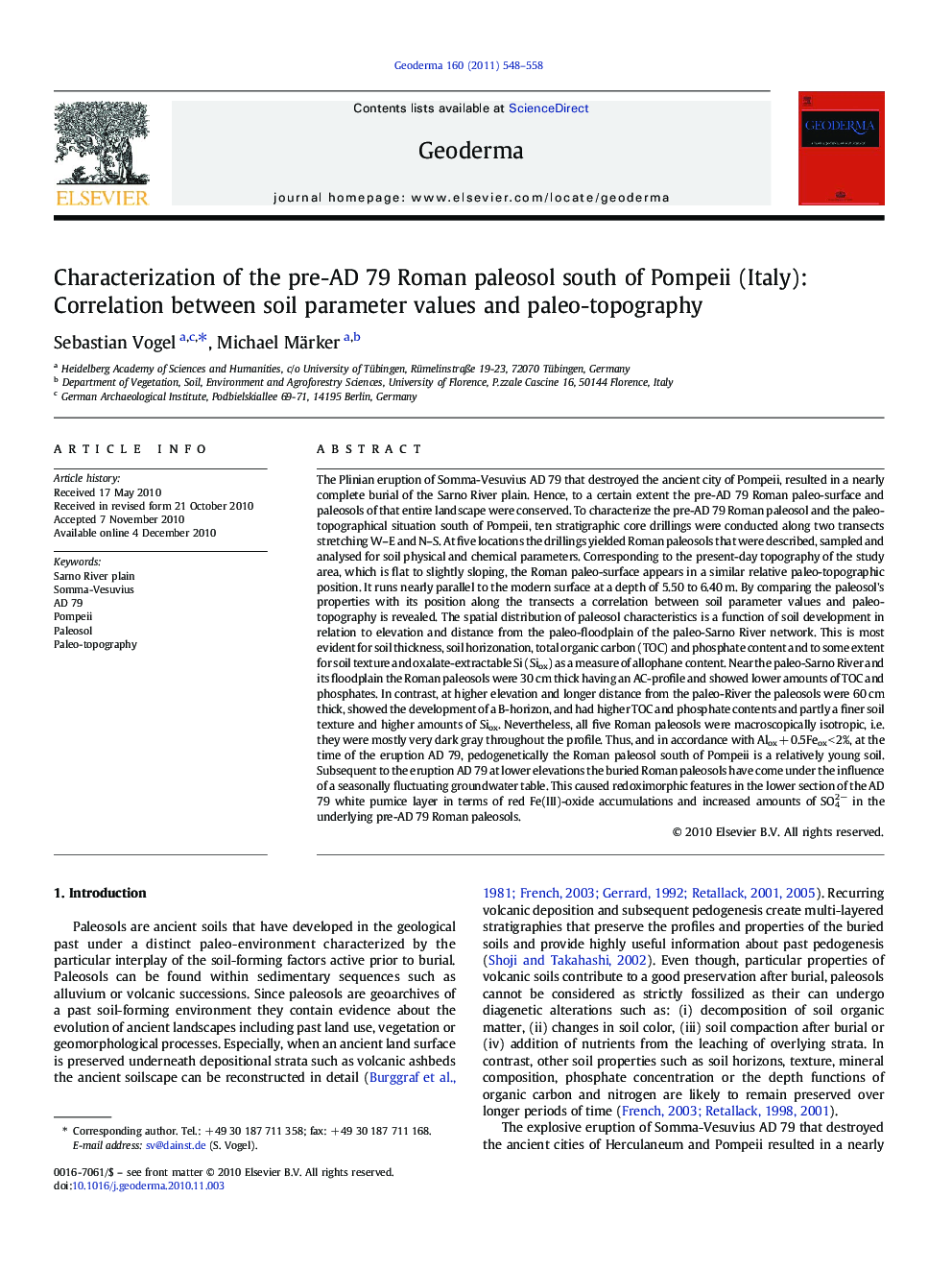| کد مقاله | کد نشریه | سال انتشار | مقاله انگلیسی | نسخه تمام متن |
|---|---|---|---|---|
| 4574272 | 1629514 | 2011 | 11 صفحه PDF | دانلود رایگان |

The Plinian eruption of Somma-Vesuvius AD 79 that destroyed the ancient city of Pompeii, resulted in a nearly complete burial of the Sarno River plain. Hence, to a certain extent the pre-AD 79 Roman paleo-surface and paleosols of that entire landscape were conserved. To characterize the pre-AD 79 Roman paleosol and the paleo-topographical situation south of Pompeii, ten stratigraphic core drillings were conducted along two transects stretching W–E and N–S. At five locations the drillings yielded Roman paleosols that were described, sampled and analysed for soil physical and chemical parameters. Corresponding to the present-day topography of the study area, which is flat to slightly sloping, the Roman paleo-surface appears in a similar relative paleo-topographic position. It runs nearly parallel to the modern surface at a depth of 5.50 to 6.40 m. By comparing the paleosol's properties with its position along the transects a correlation between soil parameter values and paleo-topography is revealed. The spatial distribution of paleosol characteristics is a function of soil development in relation to elevation and distance from the paleo-floodplain of the paleo-Sarno River network. This is most evident for soil thickness, soil horizonation, total organic carbon (TOC) and phosphate content and to some extent for soil texture and oxalate-extractable Si (Siox) as a measure of allophane content. Near the paleo-Sarno River and its floodplain the Roman paleosols were 30 cm thick having an AC-profile and showed lower amounts of TOC and phosphates. In contrast, at higher elevation and longer distance from the paleo-River the paleosols were 60 cm thick, showed the development of a B-horizon, and had higher TOC and phosphate contents and partly a finer soil texture and higher amounts of Siox. Nevertheless, all five Roman paleosols were macroscopically isotropic, i.e. they were mostly very dark gray throughout the profile. Thus, and in accordance with Alox + 0.5Feox < 2%, at the time of the eruption AD 79, pedogenetically the Roman paleosol south of Pompeii is a relatively young soil. Subsequent to the eruption AD 79 at lower elevations the buried Roman paleosols have come under the influence of a seasonally fluctuating groundwater table. This caused redoximorphic features in the lower section of the AD 79 white pumice layer in terms of red Fe(III)-oxide accumulations and increased amounts of SO42− in the underlying pre-AD 79 Roman paleosols.
Research Highlights
► South of Pompeii the pre-AD 79 Roman paleosols are preserved by volcanic deposition.
► The Roman paleo-surface runs parallel to the modern surface at a depth of 5.50 to 6.40 m.
► A correlation between paleosol's soil parameter values and paleo-topography is revealed.
► Paleosol characteristics are controlled by elevation and distance from the paleo-Sarno River.
► Pedogenetically the Roman paleosol south of Pompeii is a relatively young soil.
Journal: Geoderma - Volume 160, Issues 3–4, 15 January 2011, Pages 548–558